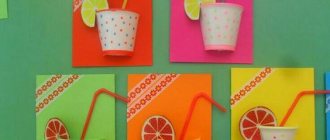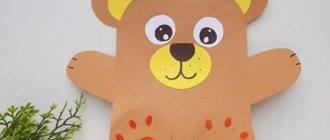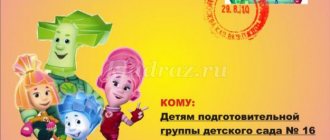Summary of the “Hedgehog” sculpting lesson in the younger group
Mikhailova Anna Sergeevna
Summary of the “Hedgehog” sculpting lesson in the younger group
1. Strengthen children’s ability to roll a ball of plasticine between their palms and pull out the plasticine with two fingers.
2. Act according to the instructions of the teacher.
(seeds) to create the image of a hedgehog.
2. Develop creativity and emotional responsiveness.
1. Cultivate a friendly attitude towards each other when working together.
Activation of the dictionary: Burrow, needles.
Materials and equipment: basket, soft toy hedgehog modeling boards Hedgehog sculpting pattern , cartoon Hedgehog Walk ”
Preliminary work: guessing riddles about wild animals, looking at paintings from the series “Life of Wild Animals”
: hedgehogs, hedgehog in autumn.
D/I “Cut pictures”
,
“The Fourth Wheel”
, n/a games
“Whose House”
,
“Whose Mom?”
Types of activities: cognitive-research, communicative, productive.
Summary of educational activities for modeling in the second junior group “Autumn. Forest animals. Hedgehog"
Diana Kudusova
Summary of educational activities for modeling in the second junior group “Autumn. Forest animals. Hedgehog"
MUNICIPAL BUDGETARY PRESCHOOL EDUCATIONAL INSTITUTION
COMBINED KINDERGARTEN No. 73 “VESNYANKA”
CITY DISTRICT SIMFEROPOL REPUBLIC OF CRIMEA
Summary of GCD
by sculpting
" Autumn . Forest animals . Hedgehog "
second junior group "Yagodka"
Kudusova Diana Enverovna
Abstract GCD (
modeling ) “
Autumn . Forest animals . Hedgehog" 1. Create an interest in working with plasticine;
2. Strengthen children’s ability to pinch off small pieces of plasticine from a piece and roll them into balls with a diameter of 5-7 mm;
3. Strengthen children’s ability to smear plasticine on cardboard using pressing movements of the index finger;
4. Strengthen the skill of placing plasticine balls at an equal distance from each other;
5. Improve the ability to combine and match colors;
6. Develop fine motor skills;
7. Cultivate accuracy;
8. Develop aesthetic perception in children;
9. To foster in children a sense of empathy for the characters and a desire to help them;
10. Contribute to obtaining positive emotions in the process of mastering basic sculpting ;
11. Improve hand-eye coordination.
Materials: Demonstration material, toy hedgehog.
GCD move:
Children are busy with independent activities. The teacher attracts the children's attention.
B: Guys, look what I brought you today... (shows the children the basket)
Q: Guess the riddle and you will find out who is hiding there.
Pillow with needles.
Yes, I ran... ( hedgehog )
Children guess the riddle.
Q: How did you guess? And you?
Q: Of course, this is a hedgehog... . (takes the hedgehog out of the basket)
Hedgehog : (teacher speaking)
Yes, I am
a hedgehog , and my name is Timoshka.
Children greet the hedgehog.
Q: Guys, where should we put our Timoshka so that he can feel comfortable and cozy?
(children’s answer options, the teacher leads to the answer “to a forest clearing”
)
Let's put our Timoshka in a clearing and look at him.
What does a hedgehog ? (needles)
Why does a hedgehog need needles ? (to protect yourself from wild animals - fox, wolf.)
Why does the hedgehog run fast ? (he has paws, they are small)
Q: Guys, our hedgehog Timoshka is sad . Why do you think? (answer options, the teacher brings the children to a problem situation: we are together, there are many of us, but Timoshka is all alone and he is bored)
Q: Guys, how do you think we can help him? (Find him friends, draw, make little hedgehog )
Then let's hurry to help Timoshka. Take your seats (the teacher invites the children to the tables)
What do you and I have to work with? (plasticine, boards, oilcloths)
Why do we need brown and black plasticine? (we will sculpt a hedgehog from brown plasticine, and eyes and a nose from black)
The teacher draws attention to the diagram of the sequence of stages of sculpting a hedgehog .
Q: Look at the picture, where do we start? (You need to roll a ball out of plasticine)
- Now, using three fingers, let’s draw out the muzzle as in the picture.
- What is the hedgehog missing (needles)
- What can we make them from? (from seeds)
-Let's do this.
- What do we have left to create? (eyes and nose)
What kind of plasticine will we sculpt from?
(from black)
Children do the work, the teacher helps individually.
Q: Do you think Timoshka will be happy with his new friends? Let's take them to the clearing to him. Children put their hedgehogs in the clearing and admire them.
Physical exercise " Hedgehog "
Timofey the hedgehog woke up
Reach your hands up
Notes on modeling in the second junior group “Hedgehog”
Valeria Gatsenko
Notes on modeling in the second junior group “Hedgehog”
Notes on modeling in the 2nd junior group
Program content:
Teach children to make a large ball of plasticine by rolling it in a circular motion on a modeling board.
Develop the ability to pull out individual parts from a whole piece.
Learn to model the image of a hedgehog: insert “needles” into the “torso”.
Develop a sense of shape, fine motor skills, and coordination in the eye-hand system.
To foster interest in modeling, independence, and accuracy.
Material: plasticine, planks, stacks, seeds.
GCD move
The music “Fairytale Forest” plays.
Q: Guys, do you hear that magical music? These are the sounds of a fairy forest. Do you want to get into this forest? To do this you need to solve a riddle:
He lives in the forest under a Christmas tree,
Wears prickly needles.
If he suddenly curls up into a ball -
The beast of prey will return with nothing.
You can’t take it in your teeth or paws
Q: Well done! You guessed the riddle correctly. You and I found ourselves in a fairy-tale clearing in the forest. And who is that sitting there under the Christmas tree?
Q: That's right, it's a hedgehog.
The teacher picks up a toy hedgehog and says that the hedgehog is sitting alone under the Christmas tree and for some reason is sad. Why do you guys think the hedgehog is sad? He's probably bored. Let's make him friends from plasticine.
Main part
Q: What parts does a hedgehog's body consist of?
D: From the body, head, needles.
Q: What does a hedgehog's body look like?
Q: What is a hedgehog's body covered with?
Please note that the hedgehog’s body consists of a head and torso, pointed in front and oval in back.
Q: We will sculpt from plasticine, from a whole piece. We take the whole piece, place it on our palm and roll the ball in a circular motion, then turn it into
the testicle is narrower in front, wider in back. We stretch out and sharpen the nose, slightly lift it up, as if a hedgehog is sniffing where the mushrooms grow.
We decorate the face - attach the eyes and nose. Next, I will design a prickly coat for a hedgehog from seeds “take, put, press down.”
MAGAZINE Preschooler.RF
Summary of a modeling lesson in the junior group “Hedgehog” (Junior group)RUSSIAN FEDERATION DEPARTMENT OF EDUCATION OF THE COMMITTEE ON SOCIAL POLICY AND CULTURE OF THE ADMINISTRATION OF IRKUTSK MUNICIPAL BUDGET PRESCHOOL EDUCATIONAL INSTITUTION OF IRKUTSK KINDERGARTEN No. 173 (MBDOU Irkutsk kindergarten No. 17 3)
Compiled and conducted by Educator: Lebedeva Ekaterina Konstantinovna
Fine arts classes help the child master basic modeling techniques, and also have a beneficial effect on the overall development of the child: they cultivate a sense of beauty, develop thinking, imagination, attention, memory, and develop hard work.
Goal: To teach children to make a large ball of plasticine by rolling it in a circular motion on a modeling board. Learn how to design a craft. Develop fine motor skills and finger coordination. Cultivate compassion and kindness.
Tasks:
1. Artistic and aesthetic development:
- instill in children an interest in creative activities
- develop perseverance, composure, diligence, accuracy and attentiveness
- develop fine motor skills of hands
2. Speech development:
- activation of the dictionary on the topic
3. Cognitive development:
- consolidate knowledge about the habitat of hedgehogs.
Demo material:
- toy hedgehog (rubber), pictures of a hedgehog.
Handout:
- plasticine, matches, cardboard stand for the finished product, board for modeling.
Progress of the lesson:
Educator: - Look, guys, who came to visit us from the forest - a little hedgehog. But for some reason he’s the only one who’s sad. Let’s make him laugh and we’ll turn into hedgehogs ourselves. To do this we need to clasp our fingers together. Straight fingers - “spines” stick up. Fingers bent - the hedgehog has curled up into a ball (we repeat several times).
Educator: - Guys, the hedgehog is still very sad. Why is he so upset? (the teacher is responsible for the hedgehog): - I’m bored in the forest, I have no friends at all and I have no one to play with. Help me please guys!
Educator: - Well, guys, let's help the hedgehog? Let's make him friends.
We show the children how to roll a large ball of plasticine between their palms in a circular motion. If a child doesn’t succeed, we help. Let the children do the labor-intensive work of sticking matches into the back of the hedgehog, and also rolling small balls for the eyes, legs and nose.
Educator: Look, guys, what wonderful hedgehogs we have turned out to be. Our hedgehog has so many new friends! Now our hedgehog will not be bored in the forest.
Do you guys like the resulting hedgehogs? Which hedgehogs did you like? Why did you like them? What new did you learn today? Did you like it?
| Next > |





